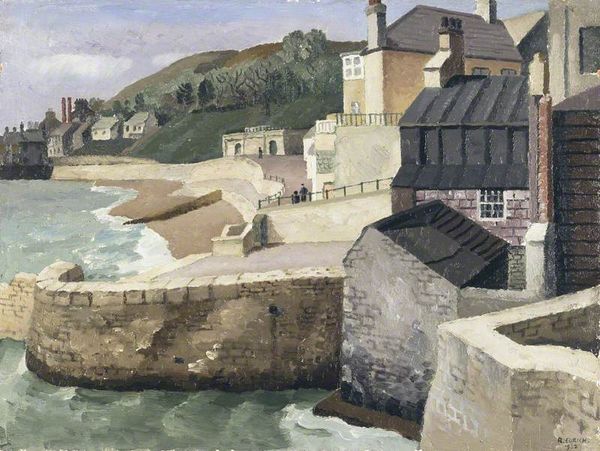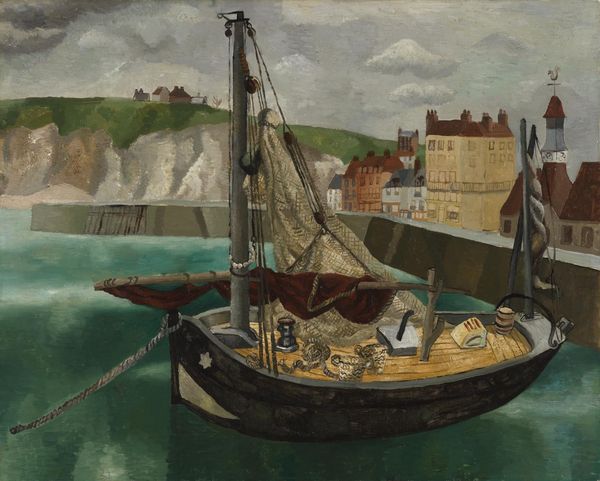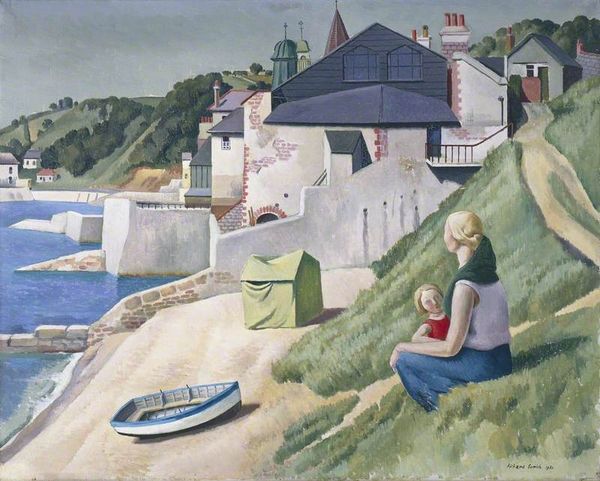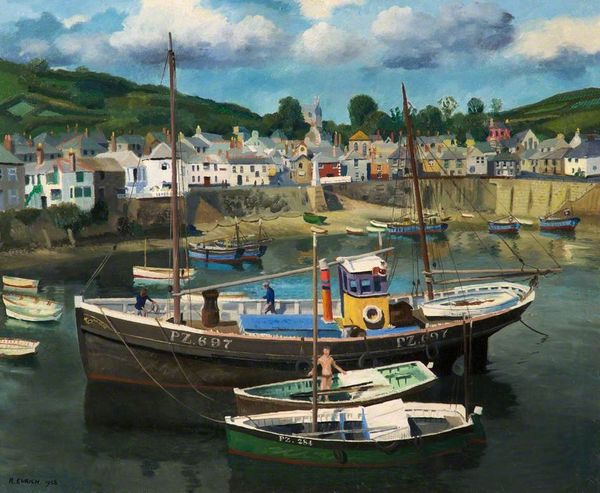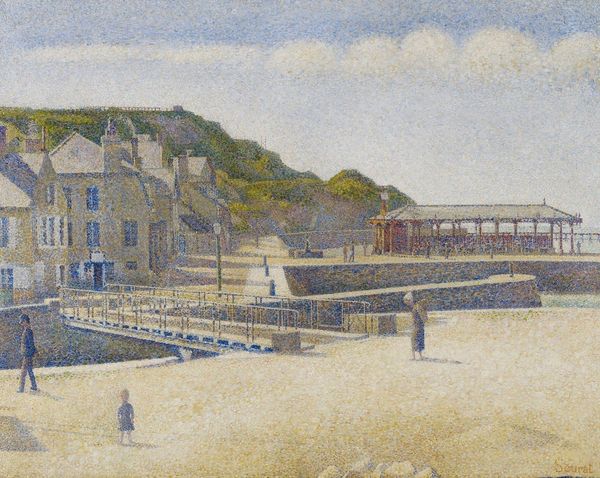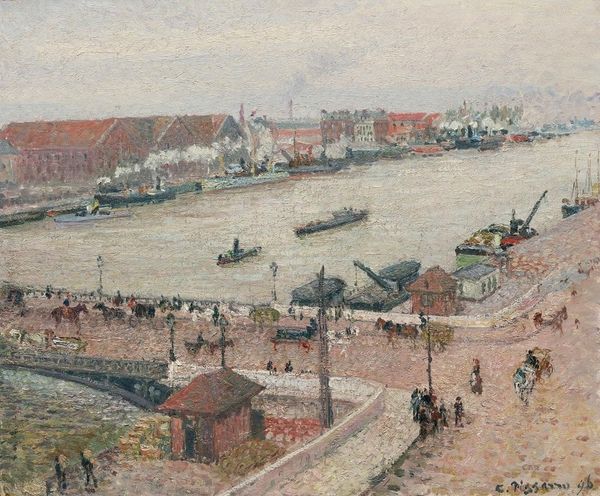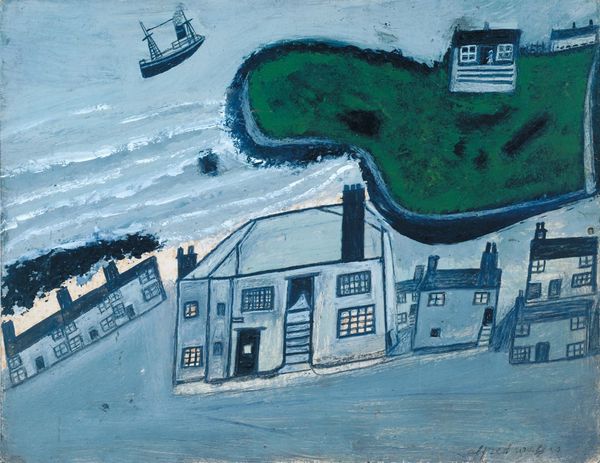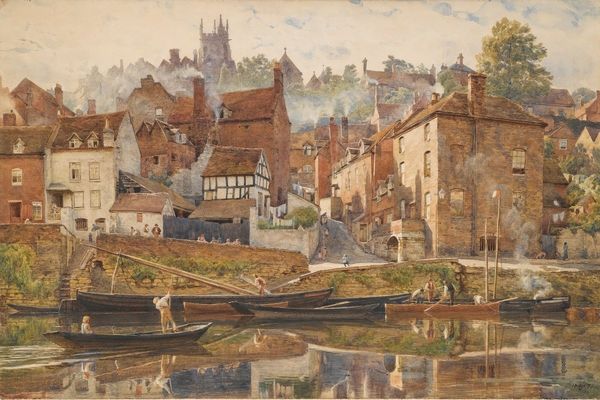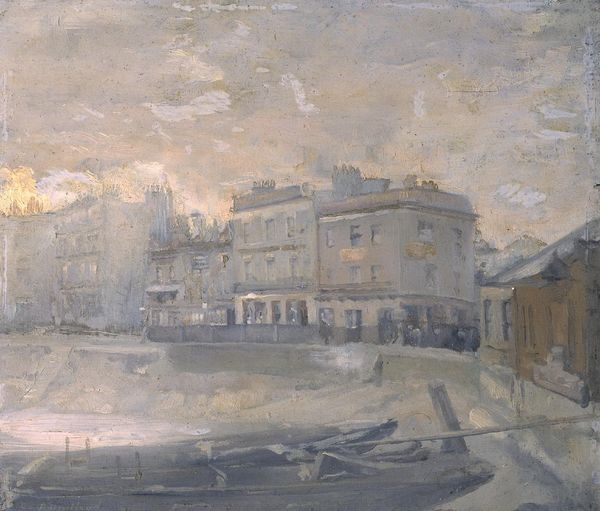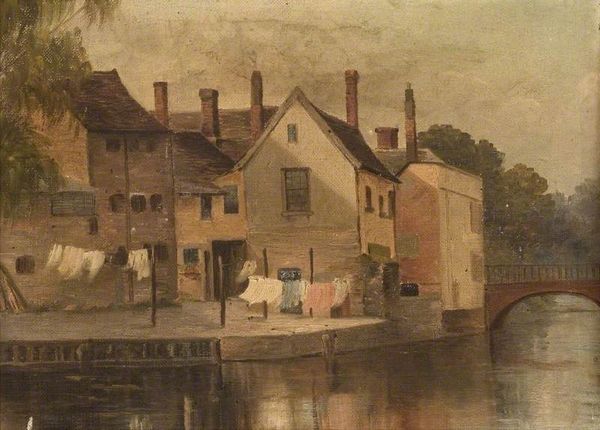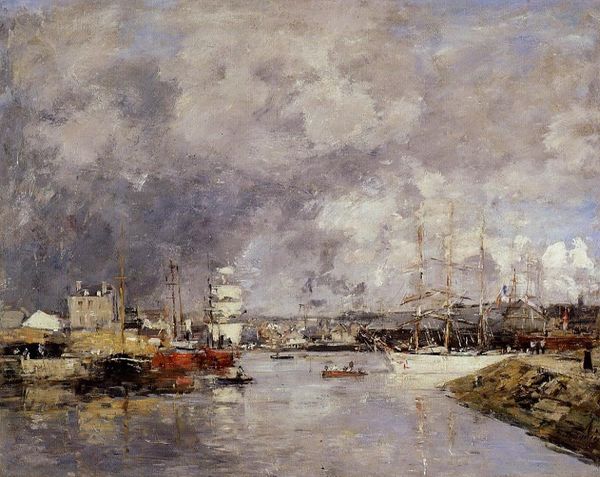
painting, oil-paint
#
painting
#
oil-paint
#
landscape
#
painted
#
oil painting
#
cityscape
#
genre-painting
#
modernism
#
realism
Copyright: Richard Eurich,Fair Use
Curator: Richard Eurich painted "Robin Hood's Bay in Wartime" in 1940, rendered in oil paint. It presents a coastal village scene with a palpable sense of quiet anticipation. What's your immediate impression? Editor: It feels very somber. There's a grey, almost metallic light, and the whole scene seems paused, as though holding its breath. Curator: Exactly. It is important to recognize how Britain’s socio-political state affected its cultural landscape. This work emerged as Britain braced itself against invasion. Considering the date, 1940, the stillness might well reflect the uneasy calm before the storm, so to speak. It portrays Robin Hood's Bay during a period when coastal communities were acutely aware of the looming threat of war. Editor: It’s fascinating how Eurich captured that sense of suspended animation. I think also his meticulous details contribute: The small figures clustered near the harbor, the way the boats sit idly on the shore... They contribute to the overall sense of a community on standby. Even the waves breaking in the distance are somehow subdued. Curator: Note too how this work builds upon traditional landscapes, whilst at the same time transforming it, with its undercurrent of looming crisis. It reflects broader narratives surrounding identity, fear, and resilience in a nation facing immense uncertainty. Editor: It's like Eurich used realism not just to depict, but to dissect a specific moment in the nation's psychological landscape. The boats for instance – vessels of both escape and vulnerability. And there's something very deliberate in showing them grounded. Curator: He understood the symbolic weight objects acquired within those conditions. The art of that moment provided solace to the people. Art became not only representation but embodied expression, of hope and mourning at the same time. Editor: It definitely provokes introspection. There is something very intimate. It speaks of Britain as seen through a melancholic lens, shaped by collective experiences and anxieties. I see the role of public art, the politic of imagery. It's more than pretty scenery. Curator: Agreed, it prompts reflections of resilience but is simultaneously raw. The value and purpose of creating in that period is to remember those voices who struggled to live through crisis. It makes us reflect on who we were, who we are, and who we might want to be. Editor: Looking at it now, knowing its context, adds layers of depth and resonance. It's not just a landscape; it’s a time capsule of emotions.
Comments
No comments
Be the first to comment and join the conversation on the ultimate creative platform.
